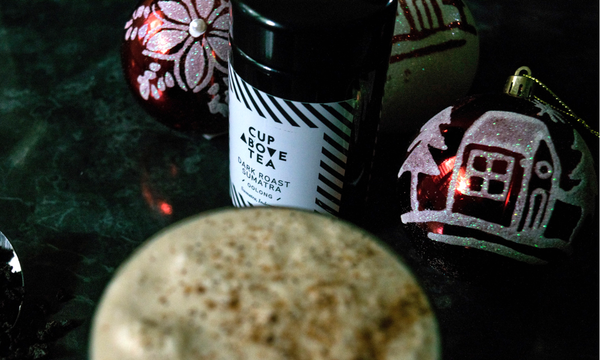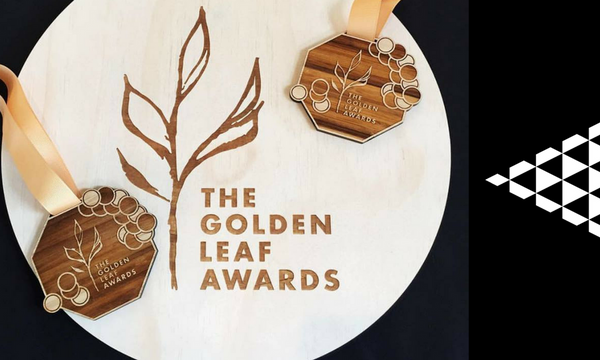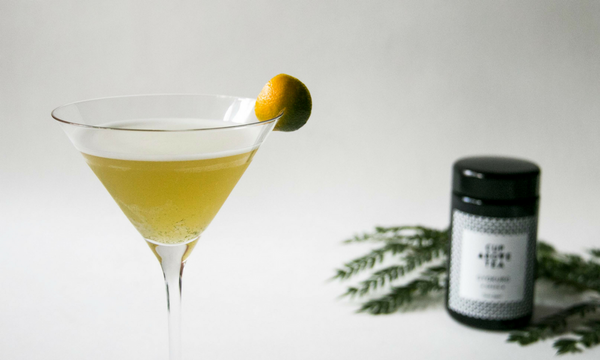A tea terroir like no other

When it comes to tea, the stock photos would have us believing all tea gardens are meticulously planted. Tea bushes climb the sides of tidy hills in neat, orderly, symmetrical rows. In the famous Wuyi Mountain region in Northwest Fujian, China, the stock photos couldn't be further from reality.
The Chen family - all four generations of them - cultivate some of the most exquisite, high quality tea in this UNESCO World Heritage protected area. Their sensational plants grow wild, free and enthusiastically. You certainly won’t find these plants in manicured stock photos in tea tourism brochures.
But, you wouldn’t want to drink anything else once you’ve tasted the tea they produce. This year we’ve secured a delightful batch of Master Zhu’s Jin Jun Mei, a tea that’s had a recent rise in popularity, but requires some explaining to ensure collectors know and understand the degrees of authenticity.
Welcome to Wuyi Rock Village, Fujian Province, China
The Chen’s plants grow in complex mazes around narrow gorges, sheer precipices and deep caves. This is the land that the Wuyi Mountain region is famous for. It has inspired countless poets, writers and artists and is a culturally and spiritually significant area where Daoist, Buddhist and Confucian temples nestle in close proximity.
The cliffs, the rocky soil and the rich water in the area work together to produce teas like no other place in the world. The terroir is special and distinctive, shaped by hundreds of years of nature’s finest work. It’s said the very finest teas are created by nature first and man second.
The sheer rock ledges help protect the tea plants from winds and extreme weather. The plants are sheltered from some of the harshest sunlight and the cliffs help keep the mists and fogs low in the valleys keeping the plants wonderfully hydrated.
The pristine water that runs down from local waterfalls is full of rich minerals and the surrounding cliffs and rocky soil absorbs heat through the day which is then released slowly during the evenings ensuring the tea plants experience a very consistent temperature at all times. It’s beautifully natural ecosystem.
The soil itself is mineral rich thanks to the erosion of the volcanic rock faces. It is soft and red, around 40cm thick. The temperature is around 18 degrees Celsius year round, with a brief frost. Rain is plentiful and humidity sits at around 80%.
There are around 100 distinct rock faces in the protected area. Some are just big rocks, others are the size of decent mountains though the overall elevation of the area is around 600 metres. Because the terroir is so famous, the region is characterised into three distinct sections reflecting the quality of the soil.
The Chen’s trees are grown in Zheng Yan soil, roughly translated as Centre Rock Tea. This is the most supreme growing area in the region, where the soil is most mineral dense. Outside this small area, the composition changes and the flavour of the tea becomes noticeably different. This secondary area is classified as Ban Yan – or Half Rock Tea. Thirdly, there is Zhou Cha or River Bank Tea, and while the quality of the soil is still good, it's considered to be only half as good as the terroir where the Chen’s grow their tea.
In the Zheng Yan area, sometimes you need to look really carefully to tell where the tea plants are. Often they’re overgrown and surrounded by other vegetation, invisible to the untrained eye. The Chen’s plants are spaced out with ample distance between each plant to allow the roots to really embed deep in the soil and spread their tentacles freely to absorb nutrients. The Chen’s use absolutely no chemicals or pesticides in their farming.
The Chen Family
The Chen family has been growing tea on their land in Wuyi for four generations. They tend around 13 acres of plants which are spread throughout the area. Some of their trees are over 100 years old. Granddaughter Chen helps manage the garden along with Grandfather Chen, Uncle Chen, the Chen Cousins and Master Zhou (Granddaughter Chen’s husband who married into the family).
The immediate and extended family are all involved in crafting tea and maintaining their meticulous standards and quality. Master Zhou and Master Zhen are proud artisans who have honed their skills over many years, learning from some of the finest tea masters in the world. They understand the subtle changes that are needed for each batch of tea, and don’t work to a standard formula.
What’s all the fuss about Jin Jun Mei?
Jin jun mei is a coveted contemporary Chinese black tea. It is both rare and prestigious. Traditional and 100 per cent authentic jin jun mei is grown only in Tong Mu Guan village in miniscule quantities. It is near impossible to source and not readily available outside of the exclusive circles of China’s elite. Foreigners are often not able to enter the small village.
Jin jun mei is a bud only tea. It takes about 10,000 separate buds (the uppermost single tip on the tea plant) to produce 100 grams of the tea. The buds are all plucked by hand and skilled pickers harvest around 2000 buds each per day. This means that the work of one experienced tea picker yields just 20 grams of this tea every day – enough to make around eight cups of tea. This gives you an indication of why this tea is comparatively more expensive than other similar teas.
Because of the rising popularity, limited authentic supply and high prices this tea can command, farmers across China have started to produce imitation jin jun mei. There is a lot of inferior product around that is marketed as authentic and sold for comparable prices. The quality is nowhere near the same and uneducated buyers are often tricked into paying too much for inferior imitations. Most retailers have no idea they are buying and selling imitations.
Tea grown outside of Tong Mu Guan, can’t be considered 100 per cent authentic, just like sparkling wine not grown in Champagne isn’t authentic Champagne. But, it doesn’t mean there aren’t some really high quality replica teas available.
We always prefer to source authentic tea as part of our collection and we don’t often taste replica teas for consideration in our library. However, we were tempted to taste the Chen’s jin jun mei for two reasons.
- Master Zhu’s, the Chen’s jin jun mei Tea Master, was raised and trained in Tong Mu Guan Village – the home of authentic jin jun mei, so he has an excellent understanding and experience in creating this tea
- The trees the Chen’s use for their jin jun mei enjoy exceptional terroir and the leaves are processed less than an hour away from Tong Mu Guan village
We found the Chen’s jin jun mei to be an exceptional imitation displaying excellent characteristics and craftsmanship.
Jin jun mei is sometimes called Golden Handsome Eyebrow and is characterised by golden tips in the dry leaf. Exceptional jin jun mei should have about 30 per cent golden buds and small, dark, glossy leaves with a limited amount of fur. There is a gold grade (Jin) and a silver grade (Yin). Via our tea library you can taste the superior gold grade jin jun mei.
How is it made?
Plucking
The uppermost tea tips are picked with careful precision. It is generally agreed that around 50,000 buds must to be plucked to produce just 500 grams of this tea. On average an experienced tea plucker harvests about 2,000 buds a day. This means it takes considerable work to produce tiny quantities. Because the tea plants grow so wildly, a Master Picker will lead the team to the exact plants that need to be harvested for jin jun mei. Only very select plants enjoying the best terroir are used. Pickers need to be careful not to harvest plants that aren’t their own which can be tricky given the free growing nature of the plants.
Sorting
Once plucked the leaves are taken straight back to the Chen’s where the extended family sorts through them by hand for impurities. Any leaves not up to their high quality standards are removed.

Withering
The remaining tips are laid out and withered to remove some of their moisture content. The leaves are carefully watched and as soon as they turn a particular shade of brown they have lost the correct amount of moisture and are ready for rolling.

Rolling
The tips are then rolled to create the very tight, fine shape you see in the dry leaf. After about an hour of rolling, the cell walls have begun to break down enough that the juice of the leaves starts flowing out. As soon as this happens Master Zhu stops rolling.
Oxidisation
Next, the leaves are placed on a wet cloth to protect the remaining moisture, before being placed in a basket which allows for proper ventilation during the oxidation process. This usually takes about 15 hours.
Drying
Master Zhu’s expert eye detects exactly when the leaves are the right colour (a dark, reddish-black with a hint of green) and the tea is then baked to finish the oxidisation and set the flavour.
And now to the drinking…
This tea is medium bodied with a stunning lingering finish. It’s an astonishing combination of sweet, fruity and savoury. The leaves can be infused up to four times.
Leave a comment
We would love to hear what you think. Leave us your thoughts on this article.
You Might Also Like...

Homemade Eggnog Infused with Oolong Tea
Oolong Tea Eggnog - the perfect festive tea-infused treat for the holiday season. It's quick, easy and screams Christmas!















